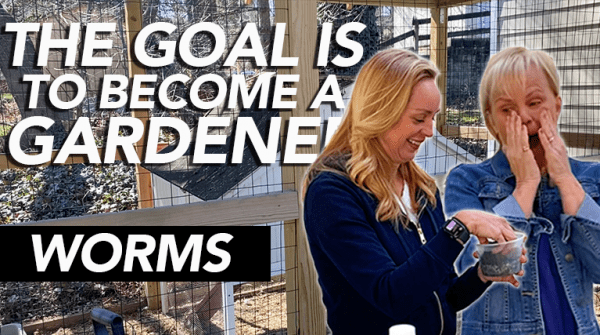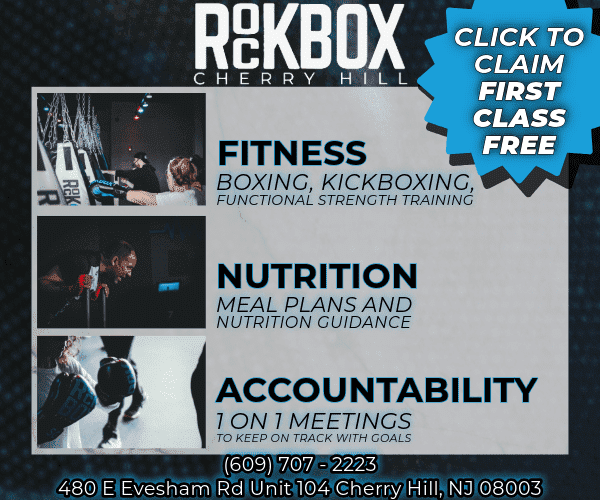Years ago, almost everyone grew their own food in their own backyards. And with food prices – shout out eggs – getting higher and higher, it might be time to take a page out of great-grandma and great-grandpa’s book.
That’s exactly what SJ Mag’s Marianne Aleardi and resident gardener, Toni Farmer, are doing during this season of “The Goal is to Become a Gardener.” We caught up with Farmer before the show starts (this month!) to get some tips on how to put the groceries back in your backyard.
What to plant
Growing your own food is all about planning. Start with making a plan of what you’re going to eat. “If your family doesn’t like tomatoes, don’t plant tomatoes,” Farmer says. “We’re trying to practice sustainability in our garden, and that means not wasting the food that you grow.”
Just like you do when you go to the grocery store, make a list of the foods you want to eat. But instead of making the list for your week, make it for the next few months. You don’t have to plan out every meal right now, but get a general idea of what foods your family will eat and what foods you should keep out of the garden.
When to plant
Many new gardeners will go to the garden center in May, pick up their seeds and immediately put them all in the ground. But that’s the biggest mistake you can make, says Farmer.
“Then in June, you harvest your food and that’s it,” she says. “And you have all of these peppers that you have to eat and share right away and end up calling it for the summer.”
The better way to make your harvests last through the season is to plant your seeds in batches. It’s a practice called succession planting: plant 10 or 12 seeds and then two weeks later, plant another 10 or 12 seeds.
Saving your seeds especially comes in handy when the temperatures rise in July. Most plants don’t like that extreme heat and won’t survive. But when you save your seeds, you can wait for the temperature to drop again in mid-August and start planting again.
“It’s so common for people to have their plants stop producing in the high temperatures, have the weeds growing, and then stop gardening for the year,” says Farmer. “But gardening season can last 8 months if you stick with it. You can keep growing food into the fall.”
How much to plant
Succession planting is necessary for seeds that produce one plant and then stop producing – but that’s not all crops.
Some plants, when cared for correctly, will continue to produce fruits or vegetables as long as you continue to harvest them. Like pole beans. “Pole beans will continue to produce beans as long as you harvest the beans off the plant,” Farmer says. “Unlike bush beans, which are only about 18 inches high and easy to manage. They produce a certain amount of beans and then they’re done.”
It’s the same with determinate tomatoes and indeterminate tomatoes. Determinate will only produce one tomato, where indeterminate will continue to produce as you harvest. As you plan your growing schedule, check the crops you’re choosing to see if they are recurring or one and done.
When you have extra food
Sometimes, even though you planned everything out, you still end up with extra food. And that’s ok, because there are plenty of ways to keep that food from going to waste, says Farmer. Like making a garden basket to share with your neighbors or quick pickling some jalapeños or canning your tomatoes for later.
“There are so many things we grow in our gardens that we can save for later, but tomatoes are one of my favorites,” she says. “You can get creative with salt and herbs to create whatever flavor palate you prefer while you’re canning them.”
If you’d rather watch a canning demonstration, tune into The Goal is to Become a Gardener later this month!
Use your local farmers market
Look, even great-grandma and great-grandpa would go to the store sometimes. And we can’t all become expert gardeners overnight. So Farmer recommends supplementing your backyard haul when you have to with your local farmers market.
“It’s especially great to build that relationship with your local farmer,” she says. “When you have that relationship, when you ask them questions and talk to them about what they’re growing, you might even find they’ll hold ingredients for you when they have their busy season.”
Plus, if food prices stay high, certain products that used to be more expensive at the farmers market might just be the same price at the national chains.
Toni Farmer’s Ugly Tomato Sauce Recipe – View Here

Check out all 5 seasons of “The Goal is to Become a Gardener” with Toni Farmer & Marianne Aleardi. And look for the start of Season 6 on SJ Mag Media’s Facebook page!
















